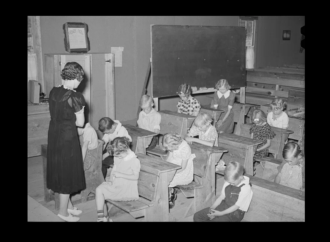Thousands of students walked out of their classes to protest congressional inaction on gun control earlier this month. As marches continue across the country, organizers estimate that more than a million students will take part in the anti-gun violence rallies. Along with parents, teachers, and administrators, these young people demanded that someone (someone else, that is) take action to enhance the safety of kids in schools.
I decided to do something different. I enrolled myself and my daughter, a 17-year old junior, in an eight-hour, care under fire, force-on-force class.
The course, offered by EDC Pistol Training in Miami, Florida, is intended to teach armed civilians and law enforcement officers to control bleeding from gunshot injuries in the context of an ongoing criminal or terrorist attack. In our class there were six other participants, including two other civilians and four officers from the U.S. Customs and Border Patrol.
I’ve taken bleeding control and other trauma first aid training before. I’ve also taken force-on-force training before. But this class was unique because we provided care “under [simulated] fire.”
We were taught the following six-step response framework:
- Secure the scene. In a violent scenario this might involve using deadly force to stop an attacker or securing a firearm that was dropped by an attacker, a police officer, or a civilian casualty. In two scenarios, my daughter retrieved a gun from a participant who was hit and used it to carry on the fight.
- Triage any wounded. This includes rapidly determining if victims are bleeding from the extremities or suffering from a sucking chest wound—things you might be able to treat expeditiously.
- Provide trauma bleeding control. This may involve elevation and direct pressure, packing a wound and applying a pressure dressing, or applying an occlusive dressing or a tourniquet.
- Manage the scene. We were tested in our ability to give direction to other bystanders and victims. This includes things like directing them to move, to call 9-1-1, to help with scene security or the treatment and evacuation of other casualties.
- Move oneself and any casualties out of the danger zone.
- Communicate. It is critical to be able to give the appropriate information to law enforcement including providing a description of oneself, the attacker(s), and any casualties and the location of the incident.
There is growing interest in trauma casualty training for “immediate responders” in the civilian concealed carry community, in law enforcement, and in the emergency preparedness space. Organizations like Seattle’s Harborview Medical Center have been actively involved in providing bleeding control classes and have promoted the staging of bleeding control kits in public places, next to automated external defibrillators (AEDs).
The concept of immediate responders is not a new one. The push to proliferate CPR training into communities to save lives began in the 1970s and grew out of the notion that earlier intervention saves lives and that there is almost always someone around who can and will help if only they have a modicum of the right kind of training.
It has taken 40 years but today, 39 states have a requirement that CPR and AED use be taught to students as a high school graduation requirement.
As many as 60 percent of fatalities from mass shooting attacks result from exsanguination—bleeding out. Another 30 percent from tension pneumothorax—sucking chest wounds that quickly lead to suffocation.
Students in many public high schools are being taught CPR. They are being taught to run or to shelter in place in response to an active killer threat. Shouldn’t they also be trained to suppress threats by any available means?
The reality for us and our kids is that government action is not the solution. It has been 19 years since Jefferson County Sheriff’s deputies failed to make a speedy entry into Columbine High School. The cops delayed while Eric Harris and Dylan Klebold taunted terror-stricken students and then shot them like fish in a barrel.
But what has changed?
Just last month members of the Broward Sheriff’s Office delayed making entry into Marjory Stoneman High School and wasted precious minutes setting a perimeter and treating the walking wounded as Nikolas Cruz continued his slaughter of 17 students. To add insult to injury, we have learned, the BSO made as many as 30 trips to the killer’s home in the last couple of years in response to complaints of alarming and violent behavior. No definitive action was ever taken to control Cruz.
The SRO who resigned following the attack, along with two school counselors, recommended more than a year ago that Cruz be involuntarily referred for a psychiatric evaluation because of self-harm and homicidal ideation. There was no follow up action. We learned that the FBI had been given the killer’s name by community members who believed he was on a path to homicidal violence including a school attack. No action was taken by the agency.
Dave Grossman, a former West Point psychology professor and the most prolific writer and speaker on the topic of the active killer phenomenon, said, “We’ve raised a generation of kids who’ve been taught to put their heads down and wait for their turn to die.”
Parents and students need to stop looking to agencies and bureaus and school districts to be their saviors. Clearly, the training that we provide to students relative to armed threats needs to embrace more than closing doors, turning off lights and waiting for their turn to die.
–
[Image Credit: Flickr-Laurie Shaull | CC BY 2.0]
















Leave a Comment
Your email address will not be published. Required fields are marked with *